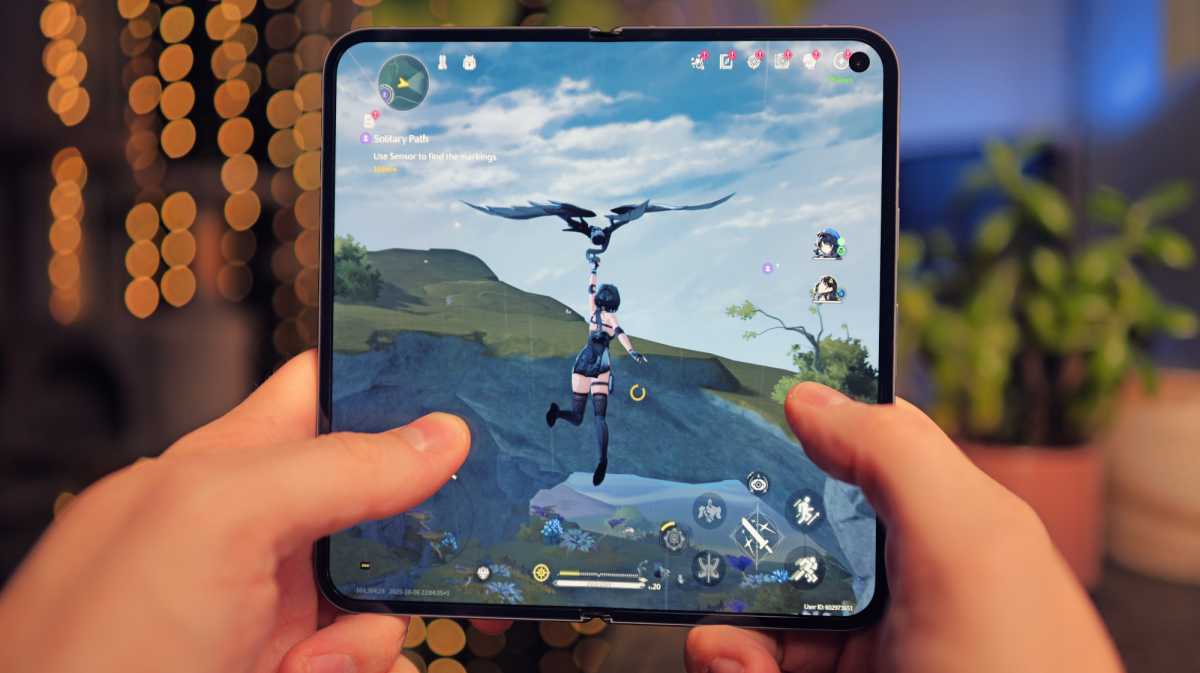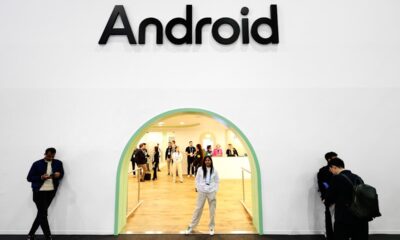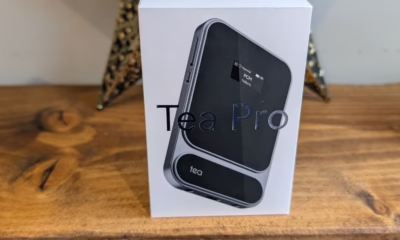Tech News
Foldable Flagships Face Off: Google Pixel 10 Pro Fold vs Samsung Galaxy Z Fold 7
The latest addition to the foldable smartphone market is the Google Pixel 10 Pro Fold, featuring an IP68 rating and Pixelsnap magnets, a first for foldable devices. If you’re considering an upgrade, now might be the perfect time to experience the foldable lifestyle.
However, Google is not the only major player in the foldable arena. Just a few months ago, Samsung impressed us with the sleek and enhanced Galaxy Z Fold 7. Can this new model compete with Google’s offering?
Having spent considerable time with both devices, I have gathered plenty of insights. Let’s delve into a detailed comparison of these two foldable phones.
Design
When it comes to design, the Pixel 10 Pro Fold and Galaxy Z Fold 7 take distinct approaches. Samsung has completely revamped the design for 2025, while the Pixel retains a similar look to its predecessor. Each device offers unique advantages, and the design plays a significant role in determining your preference.
Luke Baker
The Galaxy Z Fold 7 boasts a slim and lightweight design, resembling a standard flagship phone when folded. It is lighter than the non-folding Galaxy S25 Ultra and offers slim bezels and a sharp angular design, maximizing screen space on both the interior and exterior displays.
For those seeking a folding phone that feels like a traditional device, the Z Fold 7 stands out as one of the best options on the market. Additionally, its design features make it visually appealing and user-friendly.
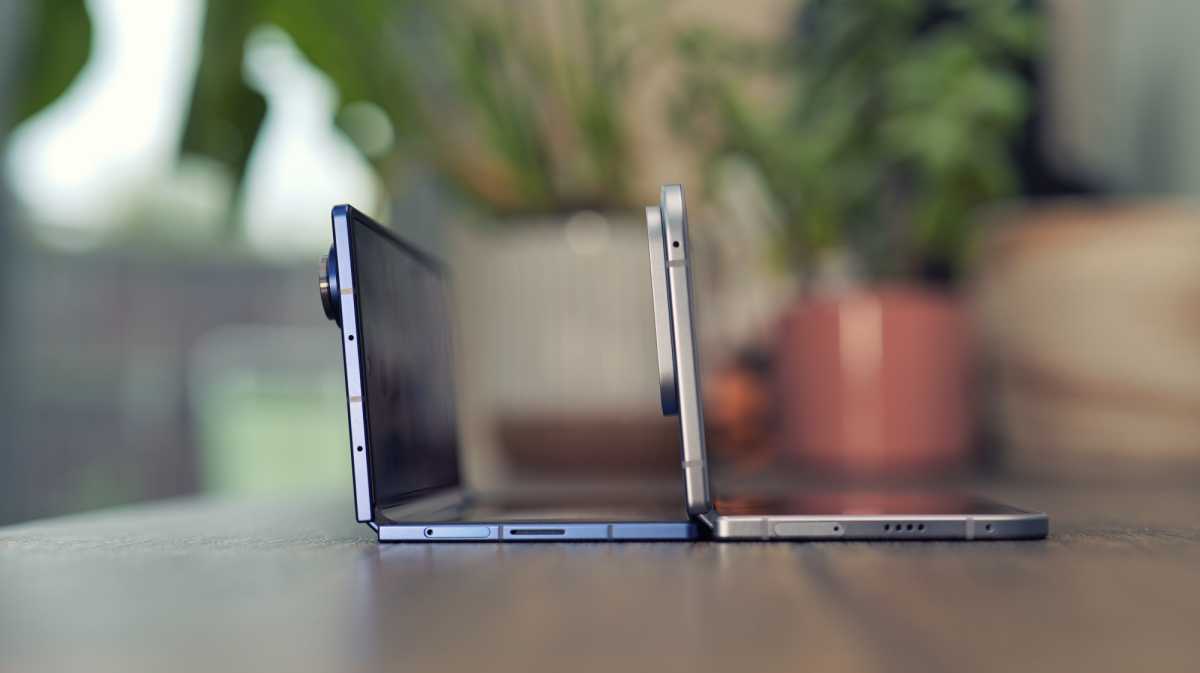
Luke Baker
On the other hand, the Pixel 10 Pro Fold offers a thicker and slightly heavier design compared to the Z Fold 7. With soft, rounded corners and relatively chunky bezels, the Pixel prioritizes durability and confidence. Notably, it is the first foldable device with an IP68 rating, making it resistant to dust and water.
Moreover, the Pixel 10 Pro Fold introduces the Pixelsnap feature, akin to Apple MagSafe, allowing compatibility with a wide range of MagSafe accessories without the need for additional cases. In contrast, Samsung offers magnetic cases with similar functionality, albeit as optional accessories.
Displays
The Pixel 10 Pro Fold features a 6.4-inch cover display, while the Galaxy Z Fold 7 sports a 6.5-inch screen, both offering 8-inch foldable panels internally. Despite the seemingly minor difference, the devices offer distinct display experiences.
The Galaxy Z Fold 7’s sharper edges make its screens feel larger in use, especially with content extending to the edges. In comparison, the Pixel’s curved corners provide a more compact feel. Additionally, the Pixel’s soft radius corners enhance comfort while holding the device, particularly when unfolded.
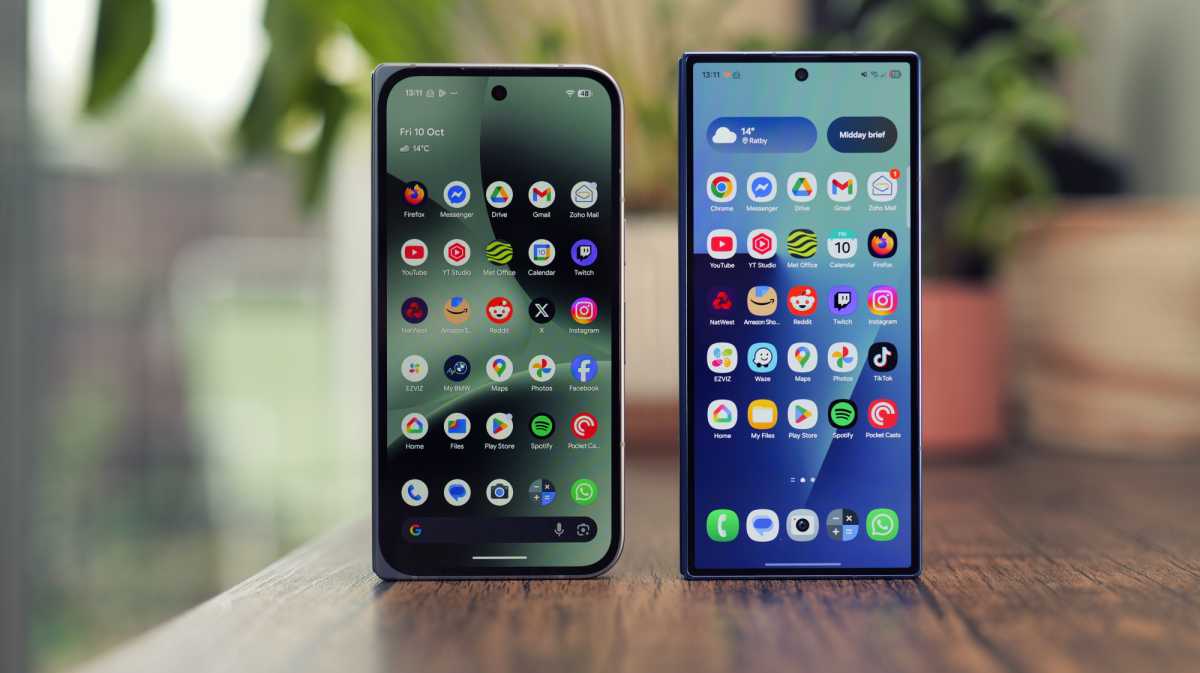
Luke Baker
In terms of brightness, the Pixel screens offer slightly higher maximum levels, although both devices deliver comparable viewing experiences. Notably, the Galaxy Z Fold 7 adjusts its display brightness to prevent overheating in sunlight, a feature that may impact outdoor usage.
Notably, the Samsung device boasts a less noticeable crease on its foldable display compared to the Pixel, offering a smoother visual experience. While users may acclimate to the crease over time, those sensitive to such nuances may favor the Samsung’s display.
Performance
The Samsung Galaxy Z Fold 7 is equipped with the Qualcomm Snapdragon 8 Elite processor, known for its exceptional speed until the recent introduction of the 8 Elite Gen 5. In contrast, the Pixel 10 Pro Fold utilizes Google’s Tensor G5 chip.
The Tensor G5 chip represents a significant improvement over its predecessor, showcasing higher benchmark scores and enhanced real-world performance. However, it falls short in speed compared to the Snapdragon processor.
The performance difference between the devices becomes evident in resource-intensive tasks such as gaming or video editing. While both devices excel in everyday tasks like social media browsing and email management, the superior processing power of the Z Fold 7 shines in demanding activities.
Notably, the Pixel 10 Pro Fold boasts 16GB of RAM across all models, offering an advantage over the 12GB RAM in the Z Fold 7’s lower storage configurations. While the RAM difference may not significantly impact multitasking performance, it becomes apparent in more demanding scenarios.
Cameras
Both devices feature a triple rear camera setup and a selfie camera on each display. While the camera setups include ultrawide, main, and telephoto lenses, the Pixel stands out with a 5x lens compared to the Z Fold 7’s 3x lens.
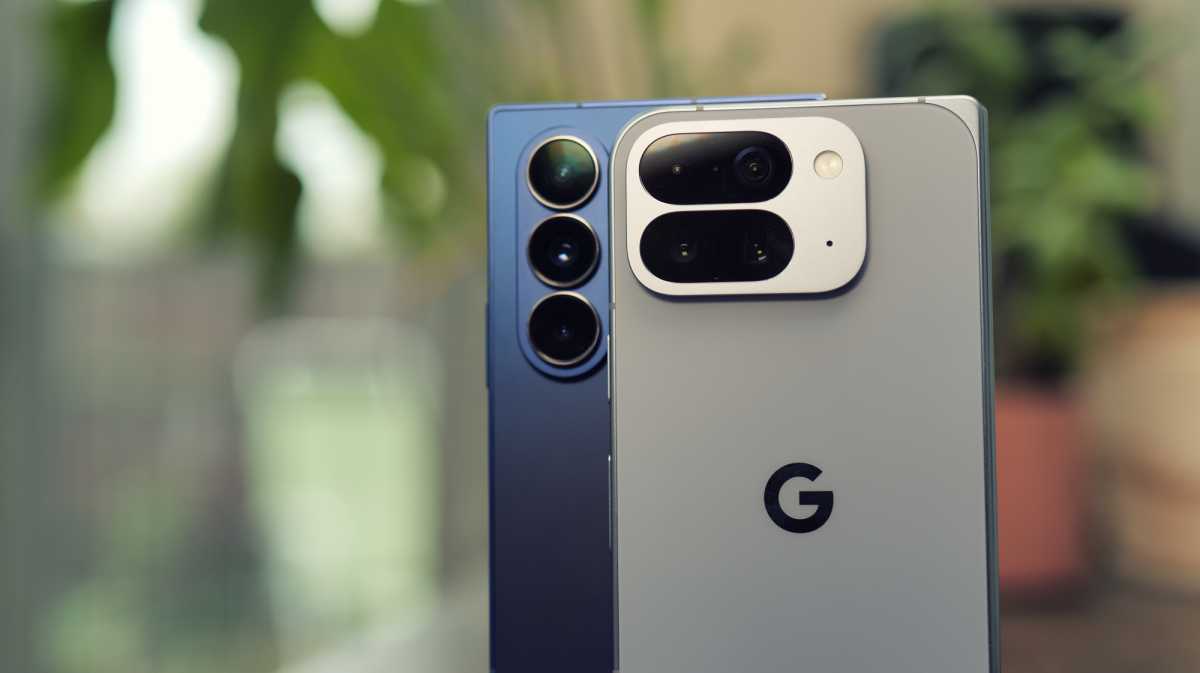
Luke Baker
The main sensor disparities are notable, with the Pixel featuring a 48MP 1/2-inch sensor and the Z Fold 7 sporting a 200MP 1/1.3-inch unit. The higher resolution and low-light performance of the Z Fold 7’s main sensor contribute to superior image quality.
Extensive camera testing reveals that the Samsung device generally outperforms the Pixel in image fidelity, with finer details and enhanced low-light performance. However, the Pixel stands out for its user-friendly camera app and features, appealing to beginners and enthusiasts alike.
-

 Video Games2 days ago
Video Games2 days agoTekken 8: Rise of the Shadows
-

 Amazon2 days ago
Amazon2 days agoNeil Young Takes a Stand: Pulling Music from Amazon in Protest of Jeff Bezos’ Support for Trump
-
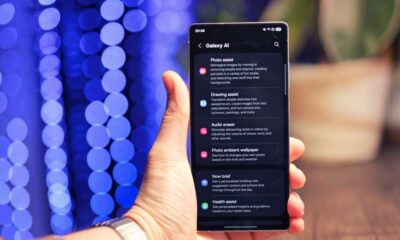
 Tech News2 days ago
Tech News2 days agoSamsung Galaxy UI 8: Embracing the Big Free AI Upgrade
-

 Video Games1 day ago
Video Games1 day agoGoku Takes on the Dragon Ball FighterZ Arena
-

 Security2 days ago
Security2 days agoCritical Vulnerability Exposed: Oracle EBS Targeted in Recent Cyber Attacks by Cl0p Hackers
-

 Microsoft2 days ago
Microsoft2 days agoEnhanced Copilot Features: Creating Office Documents and Gmail Integration
-

 Apple2 days ago
Apple2 days agoExploring the Dystopian Realms of Pluribus: An Apple Original Series Trailer
-

 AI21 hours ago
AI21 hours agoOracle’s Next-Gen Enterprise AI Services Powered by NVIDIA’s Cutting-Edge GPUs

